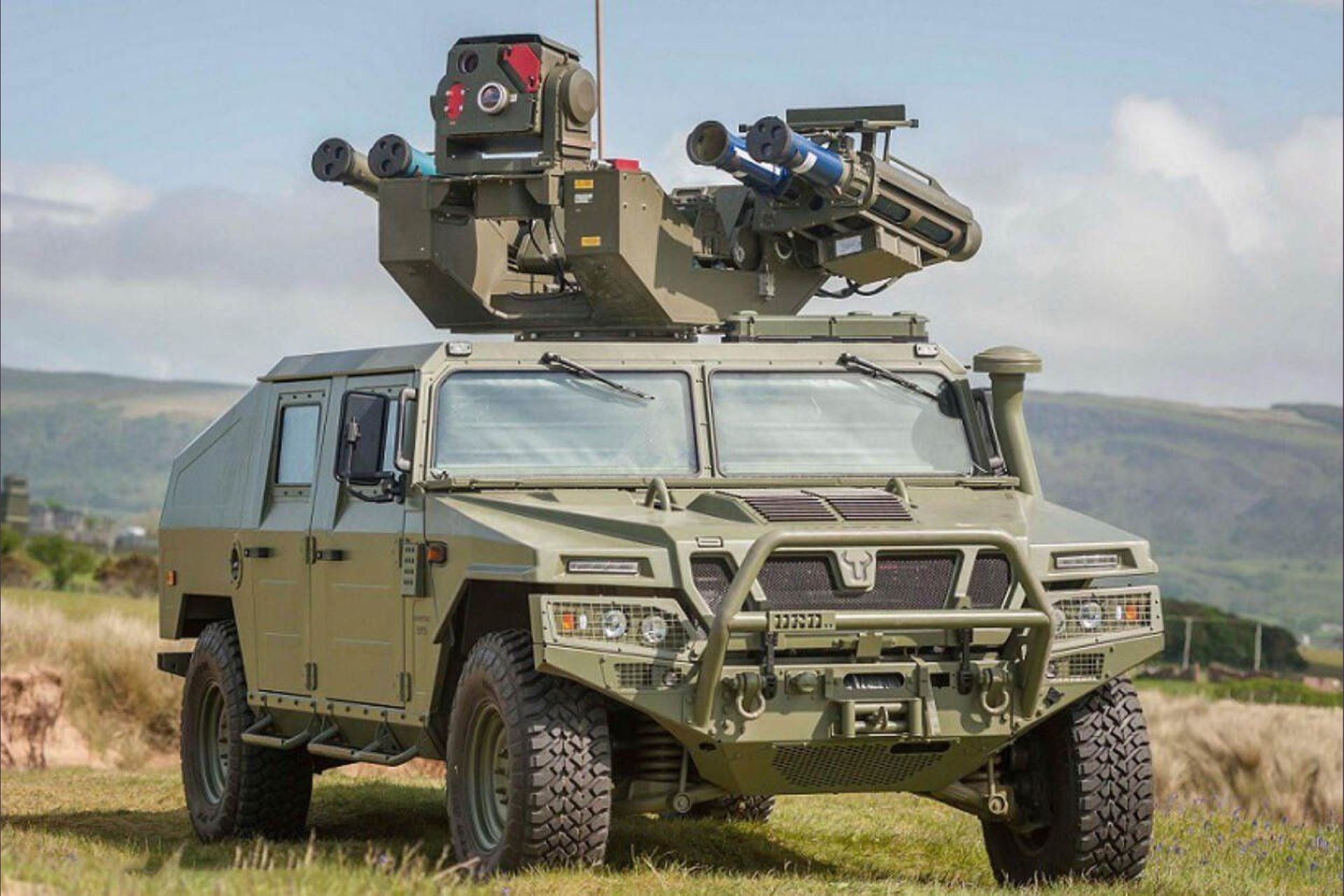Breaking News
Doctrinal change is ongoing in UK : VAMTAC to replace aging Stormer Air defense vehicle.
According to official statement, the UK is set to retire its Stormer armored vehicles, which have served as a mobile platform for the high-speed Starstreak missile system, by 2030. This change marks a significant step in the evolution of the country's mobile air defense, as the British Army is currently exploring a new generation of vehicles. However, in a time when the specter of war is returning to Europe, the British military has parted with six of its dedicated Short Range Air Defense (SHORAD) vehicles in support of Ukraine. Today, the evolving armed conflict underscores the need for modernization, a process that could take considerable time.
Follow Army Recognition on Google News at this link

VAMTAC light vehicles in SHORAD configuration (Picture source: UROVESA)
Donation of Stormer to Ukraine: A Crucial Support on the Battlefield
In response to the Russian invasion of Ukraine, the UK sent six Stormer vehicles to support Ukrainian forces. These vehicles, equipped with the Starstreak missile system, have proven particularly effective on the battlefield, offering rapid and precise air defense capabilities. The Stormers demonstrated their value in Ukraine, especially in areas where quick and mobile air defense was essential to counter enemy aerial attacks. This deployment has bolstered the Stormer’s reputation as a reliable platform, although the UK is now considering its replacement. The Stormer is the very short-range air defense system (VSHORAD) of the British Armed Forces. Developed in Belfast during the 1990s, it can fire up to eight Starstreak HVM missiles from its launcher while carrying nine more inside. Operated by a crew of three, it is equipped with a roof-mounted air defense alert system that allows for target detection and prioritization. Thales, the manufacturer, has made improvements to the Starstreak system to extend its range beyond 7 km to maximize its capabilities.

British Stormer SHORAD armored vehicle in Ukraine-Donetsk region in 2023. (Picture source: Pro-Russian sources )
The VAMTAC: A Temporary Successor with Its Pros and Cons
While awaiting a permanent replacement for the Stormer, the UK is considering the VAMTAC, a 4x4 all-terrain vehicle similar to the American Humvee, as a temporary solution. Already in service in several countries, the VAMTAC (Vehículo de Alta Movilidad Táctico) is a versatile all-terrain vehicle developed by the Spanish company UROVESA. Designed for armed forces and security services, it stands out for its high mobility and agility, capable of traversing various terrains, including rough roads. Often compared to the Humvee due to its size and appearance, the VAMTAC can reach high speeds both on and off-road. Additionally, it is air-transportable, making it a valuable asset for missions requiring rapid intervention. Robust and adaptable, it can be configured for various roles, from simple troop transport or liaison vehicle to an anti-aircraft system.
As a temporary successor to the Stormer, the VAMTAC offers several advantages and disadvantages. On the one hand, it excels in agility and mobility, being lighter than the Stormer, allowing for rapid deployment, including by air. This feature is particularly valuable for missions requiring quick response. Moreover, the VAMTAC is compatible with the tactical control console system used in the Stormer, reducing the need for retraining for crews while maintaining the same offensive capability with the use of Lightweight Multirole Missiles (LMM) and Starstreak (HVM) missiles. However, this vehicle also has notable disadvantages, including reduced protection compared to the Stormer, making it more vulnerable on difficult terrain and in high-risk environments. Additionally, as the VAMTAC is not tracked, it is less effective on rough terrains, limiting its robustness in certain operations. As the UK modernizes its armored vehicle fleet, the VAMTAC serves as an interim solution with its short-range air defense capabilities, but the British Army continues to seek a more robust and better-protected solution to meet the demands of modern warfare.


























